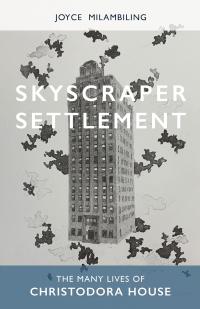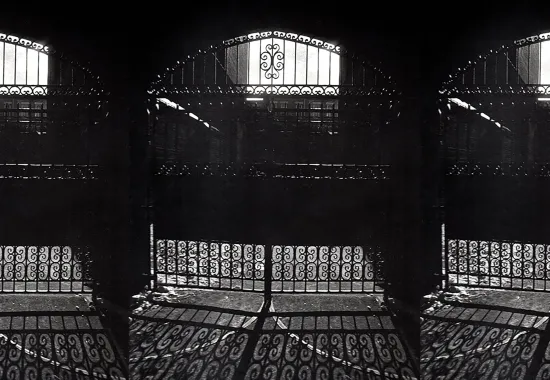A Review of Skyscraper Settlement: The Many Lives of Christodora House by Joyce Milambiling
The social settlement movement began in the United Kingdom and the United States in the 1880s. It climaxed around the 1920s and was a reformist social movement to bring the rich and the poor together via social interaction and physical proximity. It resulted in settlement houses being located in poor urban areas, where volunteer middle-class settlement workers would live, hoping to share knowledge and culture with and alleviate the poverty of their low-income neighbors. Settlement houses provided various educational, health, social, occupational, and recreation services. For someone who knows very little about Settlement Houses and the Social Settlement Movement, Joyce Milambiling’s recent history from New Village Press, Skyscraper Settlement: The Many Lives of Christodora House, would be an outstanding introduction. The first part of this book explains the historical settings of settlement houses, and the third part explains the community settlement house nexus, including controversies and limitations. However, parts one and three offer no new insights for the reader who already knows a great deal about Settlement Houses and the Social Settlement Movement. To the person who is well-versed in this subject, part two—the historical overview of Christodora House/Christodora over the decades—is a gold mine as it explains an often overlooked Settlement House with clarity, precision, depth and breadth. I have written on Settlement Houses for over twenty years, and even I was unaware of Christodora House. Overall, this book is well worth reading whether you know very little or are already acquainted with the history of Settlement Houses.
 Skyscraper Settlement explains the various roles that Christodora House has played from a nineteenth-century settlement house, founded in 1897 as The Young Women's Settlement, up to its contemporary framework. Today, the mission of Christodora is to encourage the positive academic and developmental growth of New York City's youth through stimulating educational and challenging outdoor programs. This book is broken into three sections: (1) the historical setting of New York before the opening of Christodora House, (2) Christodora House/Christodora over the decades, and (3) an overview of the Settlement houses and communities.
Skyscraper Settlement explains the various roles that Christodora House has played from a nineteenth-century settlement house, founded in 1897 as The Young Women's Settlement, up to its contemporary framework. Today, the mission of Christodora is to encourage the positive academic and developmental growth of New York City's youth through stimulating educational and challenging outdoor programs. This book is broken into three sections: (1) the historical setting of New York before the opening of Christodora House, (2) Christodora House/Christodora over the decades, and (3) an overview of the Settlement houses and communities.
Part one, the historical setting of the Lower East Side of New York before the opening of Christodora House in the mid-1800s, consists of three chapters that explain the migration and urban transformation, how associations and social movements answered the call for needed reforms, and how the Settlement house was a place of gathering and support. Milambiling highlights the great struggles of dual migration (international and internal) and the hardships of people living on the Lower East Side of New York, defining the horrid living conditions of tenement buildings, the discriminatory acts of this era (e.g., the Chinese Exclusion Act), and the ruthless leaders of capitalism. This section of Skyscraper Settlement explains how the social gospel and progressive reforms coalesced into alliances and associations to help people living in city slums and gave birth to the social settlement house movement. The last two sentences of chapter three capture the gist of settlement houses: “People came to the settlement house because they needed what it had to offer. For people who had no alternative, the weekly health clinic was an important resource. For children of the city, the settlement playground, with its grass and seesaws, was better than the streets.”
This remarkable book gives voice to one of the lesser-known but essential settlement houses in the United States.
Part two, Christodora House/Christodora over the decades, differentiates this book from the many other books on social settlement houses. I agree with the author that “Christodora House was one of the lesser known but nonetheless vital settlement houses in the United States” As one example, the Handbook of Settlements published in 1911, one of the most comprehensive studies that identified all of the Settlement House in the United States in the first half of the twentieth century, gives scant attention to Christodora House. Chapter four, the longest chapter in the book, explains Christodora House from 1897 to 1948 and describes its “tremendous impact on the surrounding community and nearby neighborhoods on the Lower East Side,” outlining the wide variety of education, health, occupational and recreation services. Chapter four also outlines some of the most important leaders, residents, and neighborhood people, such as the founder Christina MacColl, Sara Carson, Harry Hopkins, Ellen Gould, and Helen Schechter. This chapter also provides an overview of the clubs and classes, art, poetry guild, recreation, play, and outdoor activities. Chapters five and six explain the life of Christodora House/Christodora after 1948, with the most significant aspects being how the settlement work and the physical building “went their separate ways.” With settlement housing entering partnerships with new public housing developments, Christodora House moved to the Jacob Riis House, also on the Lower East Side. After explaining financial clashes, including lost battles, in the 1960s, Christodora’s new direction was to focus much of its services on inner-city and lower-income youth in the city and in natural settings. The physical building changed hands several times before being sold for development in 1987 and eventually becoming what it is today—a high-income eighty-five-apartment condo.
Part three, an overview of Settlement houses and communities, consists of three chapters and explains the motivations, controversies, limitations, and impacts of settlement houses. Milambiling gives voices to such aspects as racial exclusion, the role of religion, assimilation into Americanization, accomplishments, and the noteworthy impacts of the “three R’s” of the settlement effort: (neighborhood) residence, research, and reform. Milambiling explains how Settlement sociology was created and the birth of one of the first American sociological studies investigating how city social conditions affect people. This study, titled Hull-House Maps and Papers (1895), was authored by many residents of Hull-House Settlement in Chicago and was based on extensive statistical analysis and had magnificent color-coded maps that were innovative and groundbreaking in the late 1800s. This study challenged the banal concept of individualism and underscored Settlement Houses’ role in helping people by changing social conditions (system-directed intervention).
While Skyscraper Settlement only offers a superficial overview of complex and controversial issues a handful of times, such as speculating about the sexual orientation of women who resided at Settlement houses for extended periods, this remarkable book nevertheless gives voice to one of the lesser-known but essential settlement houses in the United States.






